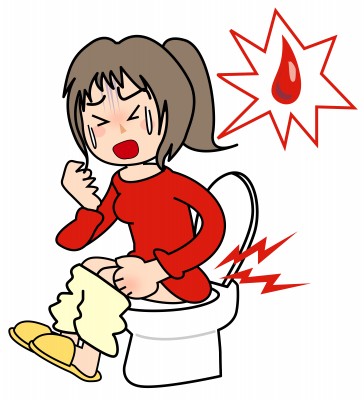The inflammation and swelling up of veins inside or around the anus is called hemorrhoids which occur mostly due to straining in that area. Also known as piles, it can be classified into two types: external and internal hemorrhoids.
External hemorrhoids are the type of hemorrhoids which occur beneath the skin of the surrounding areas of the anus.

Causes of External Hemorrhoids
Hemorrhoids may be caused due to a variety of reasons with straining at the time of bowel being the major cause. Other causes include severe diarrhoea or constipation; or in case of pregnancy in females. All the above factors lead to increased pressure upon the blood vessels around anus leading to lowering of blood flow as well as pooling of blood and thus enlargement of the vessels. Genetics may also play role in occurrence of hemorrhoids. Obesity and long hours of sitting or standing are some other causes for piles.
Signs and symptoms of External Hemorrhoids
The following symptoms may occur with hemorrhoids and depend upon the severity of the condition:
- Formation of lumps or swelling around the anus.
- Pain or tenderness during bowel movement.
- Bleeding during passing of stools
- Discharge of mucous fluids from anus
- Presence of a lump or swelling inside and/or around the anus
- Itching inside the anus.
Diagnosing External Hemorrhoids
Hemorrhoids can be diagnosed by careful clinical examination by the doctor where the doctor examines the anus either with gloved and lubricated finger or through anoscope or a protoscope that are inserted inside the rectum. Other ways may be through colonoscopy or sigmoidoscopy which includes insertion of a flexible tube for viewing the deeper parts of rectum or colon. Barium enema followed by X-ray of lower gastro-intestinal tract may also be helpful.
It is necessary to rule out other diseases associated with anal bleeding. These include Crohn’s disease, anal fissure, colitis and colorectal cancer.
Treatment of External Hemorrhoids
Although hemorrhoids may settle down themselves without any treatment, the following measures can be adopted to treat it:
- Creams and ointments– corticosteroid creams or suppositories maybe applied to the back area to relieve swelling and inflammation. These can be applied 5-7 times a day.
- Warm sitz baths for about 15 minutes 4-5 times in a day or the same number of times as of bowel movement
- Analgesics like paracetamol for alleviating pain and inflammation. These should be consumed in limited quantity as they may increase the sensitivity.
- Local anaesthetics for temporary relief of pain
- Laxatives to relieve constipation. Laxative could be either bulk forming or osmotic to increase the water content of stools and make them softer.
- Diet modificationsespecially during pregnancy or in case of obesity. One must consult the dietician or gynaecologists for the diet modification. In case of constipation also, diet modification is a necessary measure.
If the symptoms don’t subside, other measures may be taken by the doctor and include:
- Sclerotherapy or injection with a scar forming solution to close the hemorrhoid. It is used as an alternative to banding.
- Rubber band litigation in case of prolapsed hemorrhoids. This is done to lower down or remove the blood supply to the hemorrhoids.
- Cauterization and coagulation using laser beam or electric probe or infrared light to burn the lumps.
- Surgery for the removal of grade three or grade four internal hemorrhoids.
Prevention of External Hemorrhoids
One should take necessary measures to prevent the aggravation or occurrence of hemorrhoids. Below are a few ways:
- Modification of diet and lifestyle- eating more of fibrous foods and less of processed food.
- Regular exercise and physical activities to prevent side effects of sedentary lifestyle
- Taking measures to prevent constipation by intake of adequate fluids and laxatives.
- Avoid prolonged sitting in toilet and avoiding straining while bowel movement.
